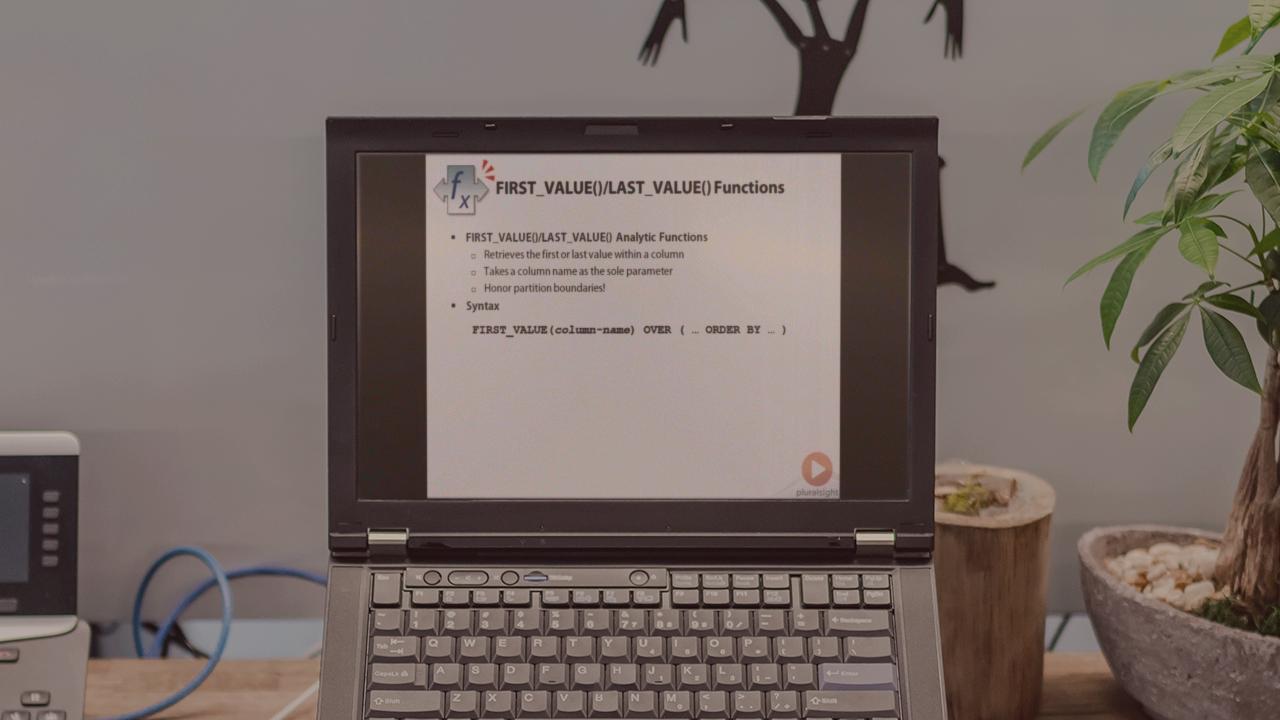Description
In this course, you will :
- Covers topics such as ordering your data with NULLs appearing first or last, using FETCH to subset your data, using SAMPLE to randomly sample from a table, using CROSS APPLY and OUTER APPLY, how to use the MODEL feature to access the rows and columns of a database table like a spreadsheet, generating random numbers, computing occurrences, using nested tables, and much more.
Syllabus :
1. Ordering, Sampling, and Random Numbers: Part I
- ORDER BY and NULLS
- DEMO #1
- FETCH and OFFSET Introduction
- Limiting Rows With FETCH
- FETCH and the WITH TIES Keyword
- Skipping Rows With OFFSET
- Useful SQL*Plus Commands
2. Ordering, Sampling, and Random Numbers: Part II
- Sampling With SAMPLE 4m
- Sampling With ORA_HASH()
- DBMS_RANDOM Package and the VALUE() Function
- NORMAL() Function
3. Extraction and Insertion: Part I
- Extension to IN Condition
- Multi-Table INSERT Feature
- Unconditional Multi-Table INSERT Feature
- Conditional Multi-Table INSERT Feature
- Conditional Multi-Table INSERT Feature and the FIRST Keyword
4. Extraction and Insertion: Part II
- Reminder of Joins and Correlated Subqueries
- What Are CROSS APPLY and OUTER APPLY?
- CROSS APPLY Using Table-Valued Functions
- Introduction to Scalar-Valued Functions
- Introduction to Collection Functions
- SAS and Oracle
- SAS LIBNAME and Oracle
- PROC SQL and Oracle
- SAS and SQL*Loader
- More Useful SQL*Plus Commands
5. Extraction and Insertion: Part III
- DEMO #1: Quick Start Guide
- SQL*Loader in Detail
- SQL*Loader Command Line Options
- DEMO #2: Using a Parameters File
- SQL*Loader Control File
- Specifying Comments in the Control File
- Options Section
- Input File Section
- Field-List Section
- Output Section
6. Extraction and Insertion: Part IV
- Input File Section - INFILE
- Input File Section - BADFILE/DISCARDFILE
- Input File Section - Types of Input Files
- Field-List Section - Introduction
- Field-List Section - Data Types
- Field-List Section - Fixed Format Files
- DEMO #1 - Read in Data Using POSITION
- Field-List Section - Delimited Files
- DEMO #2 - Read in Data Using TERMINATED BY and ENCLOSED BY
- Field-List Section - Functions and Expressions
- DEMO #3 - Compute the Body Mass Index From HEIGHT and WEIGHT
- Field-List Section - Generating Data With Parameters
- Field-List Section - Using FILLER Fields
- Field-List Section - Table Level Options
- Output Section - Conditional Load and WHEN Clause
- Output Section - Loading Multiple Files
7. Nested Tables
- What Are Nested Tables?
- CREATE TYPE With Nested Tables
- The COLLECT() Function
- The SET() Function
- The CARDINALITY() Function
- CREATE TABLE and the Nested Table Storage Table
- Collection Unnesting
- Creating a Delimited String From a Nested Table
- INSERT INTO With Nested Tables
- Complex Nested Tables
- Multiset Operators and the Powermultiset Functions
- DEMO #1 - Multiset Operators
- DEMO #2 - The POWERMULTISET() Function
8. Computing Intersections and Occurrences: Part I
- Preliminaries
- A Flashback to Grade School
- Method #1 - Data in a Single Table
- Method #2 - Data in Separate Tables
9. Computing Intersections and Occurrences: Part II
- Motivational Example
- Introduction to the DBMS_FREQUENT_ITEMSET Package
- FI_TRANSACTIONAL Procedure Syntax
- Example #1 - How Many Candybars Can One Person Eat?
- Example #2 - Just the Top X%, Please!
- Example #3 - Subsetting for Desired Combinations
- Example #4 - Including the Desired Items
- Example #5 - Excluding the Undesirable Items
- Example #6 - Using FI_HORIZONTAL on Columnar Data
10. The MODEL Feature - Part I
- Preliminaries
- What Is the MODEL Feature?
- What Are Multi-Dimensional Arrays?
- Motivational Example
- MODEL Syntax
- Working With Cells
- Updating and Inserting Cells
11. The MODEL Feature - Part II
- ANY Wildcard and CV() Function
- DEMO #1 - Using ANY and CV()
- Using IN, BETWEEN and Expressions
- Using FOR Loops
- NULL and Absent Values
12. The MODEL Feature - Part III
- Initializing New Measures
- Iteration With ITERATE
- Using UNTIL() and PREVIOUS()
- PRESENTV() and PRESENTNNV()
- Aggregate Functions
- Reference Model Clause









